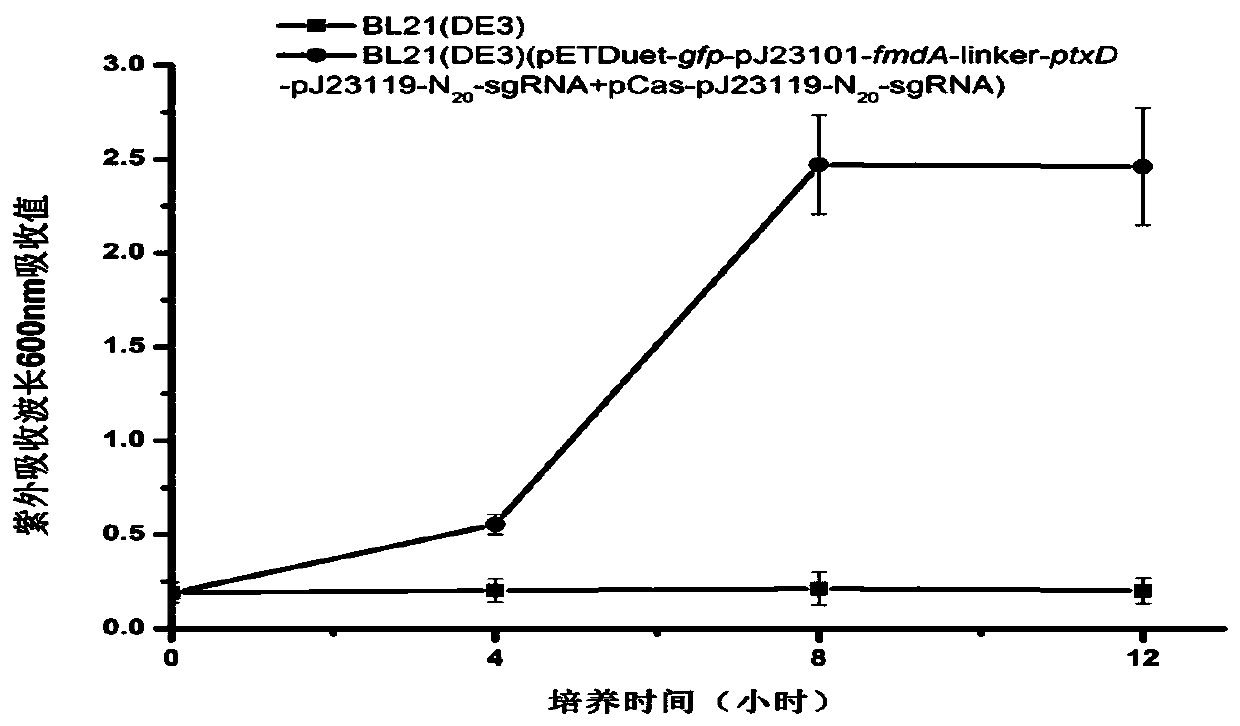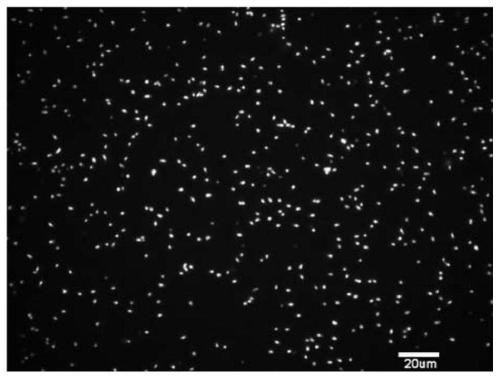Enhanced escherichia coli capable of resisting sundry fungus pollution and bacteriophage infection, and construction method and application of enhanced escherichia coli
A technology of anti-miscellaneous bacteria pollution and Escherichia coli, applied in the field of genetic engineering, can solve problems such as common bacteria
- Summary
- Abstract
- Description
- Claims
- Application Information
AI Technical Summary
Problems solved by technology
Method used
Image
Examples
Embodiment 1
[0082] Acquisition of Formamidase and Phosphorous Phosphate Dehydrogenase Fusion Gene Containing Constitutive Promoter
[0083] Using the formamidase gene of Paenibacillus pasadenensis.CS0611 genome and the phosphite dehydrogenase gene of Klebsiellapneumonia.OU7 as templates, the Linker sequence was used as a bridge to connect the two genes into a fusion gene. Entrust Sangon Bioengineering (Shanghai) Co., Ltd. to optimize the codons and synthesize the formamidase gene and phosphorous acid dehydrogenase gene.
Embodiment 2
[0085] The construction of anti-miscellaneous bacteria plasmid (pJ23110-fmdA-linker-ptxD-pJ23119-N 20 -sgRNA)
[0086] The amplification conditions were as follows: react at 94°C for 3 min; then react at 94°C for 10 s, 50°C for 5 s, and 72°C for 2 min, and cycle 30 times; finally react at 72°C for 7 min, and finally cool down to 4°C to store the PCR product. Using the amplified pJ23101-fmdA-linker and ptxD fragments as templates, using A1 and A2 as upstream and downstream primers respectively, amplified to obtain HR-pJ23119-N 20 - sgRNA (as shown in SEQ ID NO.3). Connect seamlessly into pETDuet-gfp-pJ23101-fmdA-linker-ptxD after single digestion with Pci I to obtain recombinant plasmid pETDuet-gfp-pJ23101-fmdA-linker-ptxD-pJ23119-N 20 -sgRNA, and transformed into recombinant Escherichia coli DH5α.
[0087] The enzyme reagent used in PCR is TaKaRa company's HS DNA Polymerase with GCbuffer; PCR reaction system and conditions are as follows:
[0088]
Embodiment 3
[0090] Construction of CRISPR / Cas9 system plasmid
[0091] The amplification conditions were as follows: react at 94°C for 4 min; then react at 94°C for 30 s, 50°C for 5 s, and 72°C for 12 min, and cycle 30 times; finally react at 72°C for 7 min, and finally cool down to 4°C to store the PCR product. The plasmid pCas was used as a template, and primer C1 and primer C2 were respectively used as upstream and downstream primers, and the PCR reaction system was as in Example 2. Amplified to obtain the transformed pCas plasmid (pCas-pJ23119-N 20 -sgRNA).
PUM
 Login to View More
Login to View More Abstract
Description
Claims
Application Information
 Login to View More
Login to View More - R&D
- Intellectual Property
- Life Sciences
- Materials
- Tech Scout
- Unparalleled Data Quality
- Higher Quality Content
- 60% Fewer Hallucinations
Browse by: Latest US Patents, China's latest patents, Technical Efficacy Thesaurus, Application Domain, Technology Topic, Popular Technical Reports.
© 2025 PatSnap. All rights reserved.Legal|Privacy policy|Modern Slavery Act Transparency Statement|Sitemap|About US| Contact US: help@patsnap.com



